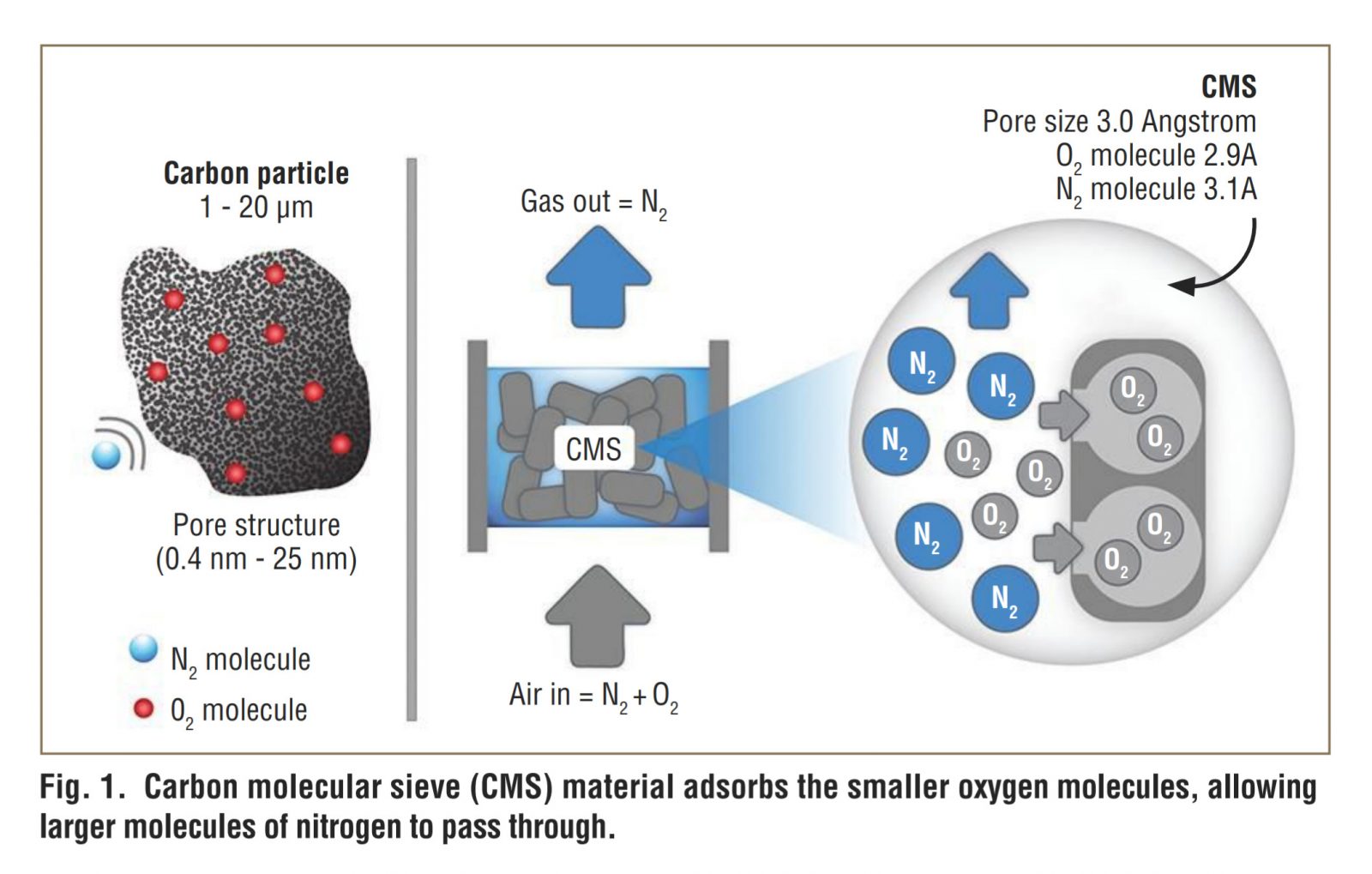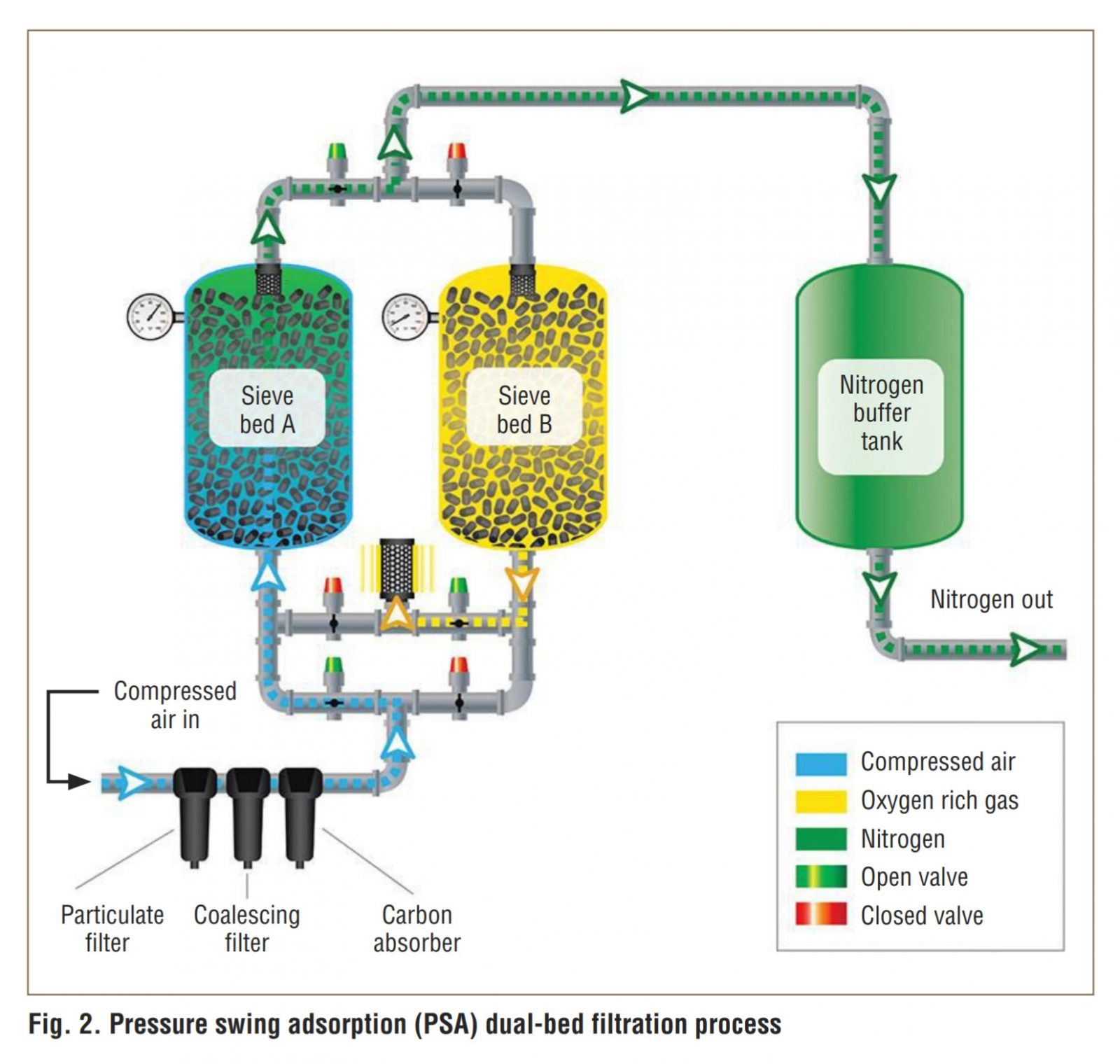Nitrogen: Time for a New Game Plan
The recent pandemic forced many companies into survival mode: reducing head-count, cutting costs where possible and establishing new health and safety protocols, all while trying their best to carry on with business as usual. But what about the next crisis? Will your company revert to survival mode, or will you be ready? Will your company survive, or will it thrive? Developing a self-sustainable operation is the next critical step for future-focused companies. For manufacturers, this means ensuring their plants do not come to a standstill. How many third parties does your company rely on? Have you experienced delayed deliveries or needed to quickly research and find new suppliers? Various industries, including heat treating, are dependent on nitrogen for crucial steps in their processes. Traditionally, this means relying on a third party and being under contract for regular liquid-nitrogen deliveries. It may be time for a new game plan … take control, lower your costs and generate your nitrogen in-house, on demand.
South-Tek Systems has been designing and manufacturing dependable nitrogen-generation technology since 1997. We have installed more than 12,000 systems into small, privately held businesses and Fortune 500 companies, all looking to drive cost savings and efficiency. South-Tek’s brand has not only been built on reliability but also on easy integration into a customer’s manufacturing facility – providing nitrogen generators that are quick and simple to maintain. Tried, Tested and Proven Technology Nitrogen, Earth’s most abundant gas, makes up 79% of the air we breathe. Generating nitrogen in-house, filtering out oxygen and other gases and impurities, is the current preference of many applications for producing nitrogen in a safe, efficient and cost-effective manner. PSA (pressure swing adsorption) filtration technology coupled with a dual-bed design is the gold standard of industrial nitrogen generation. Decades of progress with N2 generation have clearly identified PSA as the trusted filtration process to provide continuous 95-99.999% N2 purities.
“99.999% nitrogen can be achieved with a proper system design that utilizes dual-bed PSA as its nitrogen purification technology,” said Matt Thomas, director of engineering at South-Tek Systems. “We ensure purity levels with in-house testing using oxygen analyzers that have accuracies of ±2 ppm (parts per million). Many clients require additional third-party verification using very precise chromatography machines that corroborate our factory results and the ability of our generators to achieve purities better than 10 ppm O2 for years in the field.”
“Accomplishing consistent high-purity nitrogen year after year requires years of design experience, utilization of high-quality components, proper setup and straightforward periodic maintenance,” Thomas said. The principle of PSA technology is ADSORPTION. Not to be confused with absorption, adsorption is the ability of a solid substance to attract molecules they come in contact with to their surface. The gas does not become part of the solid; instead, it is held by the solid surface under a specific pressure.
In the first step of the process, compressed air passes through a series of filters to remove any oils, particulate or moisture. Next, the clean, dry air moves into one of the two adsorption vessels (sieve beds) filled with carbon molecular sieve material (CMS). As the pressure increases to 95-130 psi, the CMS material selectively adsorbs the smaller molecules of oxygen, allowing the larger molecules of nitrogen to pass through. The nitrogen, at the desired purity level, is then stored and ready for use (Figs. 1 and 2).
While the first sieve bed is making N2, the second sieve bed depressurizes to exhaust the adsorbed O2 into the atmosphere. This cycle of adsorption and desorption (pressurize/depressurize) between the two sieve beds allows for continuous production of nitrogen at a consistent purity. The dual-bed design allows for maximum efficiency and minimal maintenance.
One Size Does Not Fit All
For years, the heat-treating industry has depended on the inert properties of nitrogen to push oxygen out of high-temperature environments, often requiring high flowrates and purities in a short amount of time. Traditionally, buying bulk nitrogen has been the go-to solution. With modern nitrogen generators dialed-in to meet the specific requirements of the heat-treating industry, companies are recognizing the numerous benefits of self-sustainable nitrogen generation and making the switch.
The general manager of a Midwest commercial heat-treat facility describes their experience with the transition to nitrogen generation. “The system is well-engineered and the quality of the components South-Tek uses are superior,” he said. “Since installing the generator three years ago, we have not had any unscheduled downtime. This is a solid and reliable way of receiving our necessary nitrogen supply.”
Industrial generators should not be a one-size-fits-all solution. A single nitrogen generator offers flow rates ranging from 50 scfh up to 36,000 scfh and purities from 95% up to 99.999%. With each 1/100th of a percent change in purity affecting both the application process and cost, precision is critical. A system customized for your exact nitrogen requirements is necessary to be considered an efficient and cost effective solution.
Is nitrogen generation a good fit for heat treating?
Heat treating uses nitrogen for processes including blanketing, nitrogen purging, carrier gas and more. Dan Herring, “The Heat Treat Doctor,” provides South-Tek clients expert advice regarding heat treating and metallurgical processes related to nitrogen atmospheres, helping them recognize when a generator is the best solution and when it is not. The atmospheres used in the heat-treat industry have one of two common purposes:
• To protect the components processed from harmful chemical reactions that could occur on their surfaces (such as oxidation or carburization) – that is, to be passive (chemically inert) to the metal surface
• To allow the surface of the parts to be changed (by adding carbon, nitrogen or both) – that is, to be reactive (chemically active) to the metal surface
Nitrogen generators offer the most benefit when a continuous-flow atmosphere of either pure N2 or N2 as a component is needed. Typical combinations include N2/H2, N2/CH4 or just N2 for cover gas in N2 tempering, stress relieving, normalizing, annealing, hardening or CAAB (continuous atmosphere aluminum brazing). Nitrogen generation is also suitable for continuous-flow applications where N2/ methanol atmospheres are needed, such as carburizing and neutral hardening. Additional examples of application use include chamber purging before FNC and nitriding, as well as feeding N2 flow as required by vacuum degreasers. Jim Wilbur of Wm. Wright & Associates Inc. works with many of the biggest names in the heat-treating industry. “We have installed multiple South-Tek generators, and each one has been problem-free and left our customer very satisfied,” Wilbur said.
Approximately 80% of nitrogen uses requires gas, not liquid form. The main reason nitrogen goes through a costly liquefaction process is for ease of transportation. Eliminate liquefaction and the cost behind it by simplifying the process and generating nitrogen on-site.
Today’s Smart Investment Helps Ensure Your Tomorrow
There has never been a better time to invest in your company’s tomorrow. Nitrogen generators provide a fast, favorable ROI, and when comparing the cost of generating nitrogen to buying in bulk, the heat treating industry on average realizes savings of 80-90%. For example, the current average price of purchasing liquid bulk is $1.00 per CCF, while the cost of generating your own with a South-Tek Systems’ generator is ~10 cents per CCF.
Jim Senne of MetalPro Resources, a 30-year veteran in the heat-treating industry, has years of successful South-Tek Systems’ nitrogen generator installations under his belt for various processes, including N2 tempering, N2/CH4 atmosphere, N2 purge of vestibules in continuous FNC and N2 bubbling in vacuum degreasing. Each process need is different, requiring capacities from 50 to 10,000 SCFH and purities ranging from 99 to 99.999%.
“There are two things that do not vary in these installations: the equipment runs completely trouble-free, and the economic payback was fast,” Senne said. Just as significant as the cost savings, generating nitrogen on-site cuts out the middleman and eliminates long-term contracts. Each self-sustaining initiative your company takes to prepare for unforeseen circumstances increases its ability to survive and thrive in the future.
Did you like this article? Click here to subscribe to The Monty.
Surplus heat treat equipment? Click here for a free appraisal and our help in selling it.


